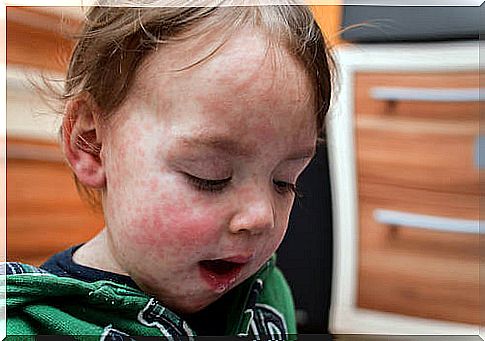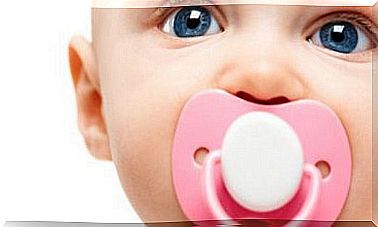Allergy To Cow’s Milk Proteins In Children

Did you know that one of the most common allergies in babies is cow’s milk protein allergy? It is one of the first to occur, because cow’s milk is one of the foods that is introduced before the baby reaches 12 months of age (and only after the rest of the allergenic foods). This allows you to spot this allergy right away and start treatment as soon as possible to avoid possible complications.
Cow’s milk protein allergy affects 2% of children and tends to persist into adulthood. The important thing is to differentiate it from lactose intolerance, because in this case the number of foods to avoid is greater. For this reason, we advise you to be very careful and inform the school, especially if the child is staying to eat there.
Do you want to know how to identify milk protein allergy and what to do in case of an unexpected reaction? What can the baby eat? How should you prepare food to avoid cross-reactivity? In this article, we will try to answer these questions.

Cow’s milk protein allergy diagnosis and symptoms
Consider the fact that this allergy is nothing more than a response from the immune system. Then, detection is done by testing for IgE antibodies in the blood. That said, there are two types of tests that can be done: the prick test and the blood test .
The prick test consists of injecting the allergen under the skin and seeing if any red, itchy bumps appear. In the case of children this method is less invasive and for this reason it is the most used. The blood test allows you to evaluate the reaction of blood cells to milk proteins.
These tests should be evaluated in light of the child’s individual and family medical history, the age of allergy onset, and the time elapsed between ingestion of the allergen and the onset of symptoms.
Typically, the symptoms of cow’s milk protein allergy are: itching, redness of the skin, nausea, vomiting, diarrhea, abdominal pain or difficulty and pain in breathing. All these symptoms appear within hours of taking the allergen.
Dietary treatment
Unlike lactose intolerance, dairy products are not the only ones responsible for allergy to cow’s milk proteins. In this case, veal and derivatives such as hamburgers, sausages, meat sauce, etc. are also involved.
Furthermore, there is a great similarity between the proteins of milk and those of goat and sheep meat. Therefore, they should be avoided like any source of lactoglobulin and casein.
These proteins are found in sauces, preserves, convenience foods, chocolate, cocoa, cereals, some types of bread, sausages and desserts. Typically, they are used as additives and are also found in soaps, body creams and medicines. Therefore, before buying a product, we advise you to read the labels carefully and to inform yourself with the seller because it is mandatory to declare the presence of these proteins.
However, traces can also be found in other foods. This is due to cross-contamination caused by not having different production lines. So, if you are unsure whether the product you are about to buy is free from cow’s milk proteins, it is best not to buy it.
Finally, remember to use different dishes for foods that do not contain these allergens and others. Also, prepare food in different areas and clean all surfaces and pots well after use.
Nutritional alternatives for children with cow’s milk protein allergy
As for dairy products, you have hydrolyzed foods in which the allergy-causing proteins have been eliminated. Or, you can opt for plant-based drinks, as long as you take into account the following tips:
- It is advisable to introduce soy-based drinks only after 12 months.
- Rice-based drinks are not recommended because they contain large amounts of arsenic, a toxic mineral found in the soil where this cereal grows.
- The rest of the drinks, such as those based on oats or dried fruits, can be consumed without problems, even if the nutritional value is not like that of milk. These vegetable drinks have very little protein, but are distinguished by the content of quality carbohydrates and fats.
- Choose those drinks that have no added sugar and, if possible, enriched with vitamin D and calcium.

As for meat, you can feed your child chicken, turkey and pork. Also, if you put citrus fruits and peppers in the same meal, you will improve iron absorption.
How to live with this allergy
It is common for many questions to arise in you once you have been diagnosed with cow’s milk protein allergy, such as the ones we answered in this article. The main reason for your doubts is that they are essential foods for bone growth and for the prevention of anemia.
Fortunately, there are other foods that provide the same benefits. For example, broccoli, Brussels sprouts, almonds, beans, shellfish, fish, etc.
Care must be taken when buying food and when eating out. In this case, we remind you to always inform restaurateurs to avoid accidental contact or ingestion of foods that contain cow’s milk proteins. For this reason, always carry adrenaline with you to reduce the impact of anaphylactic shock that can manifest itself with respiratory disorders, dizziness, sweating, tachycardia.









